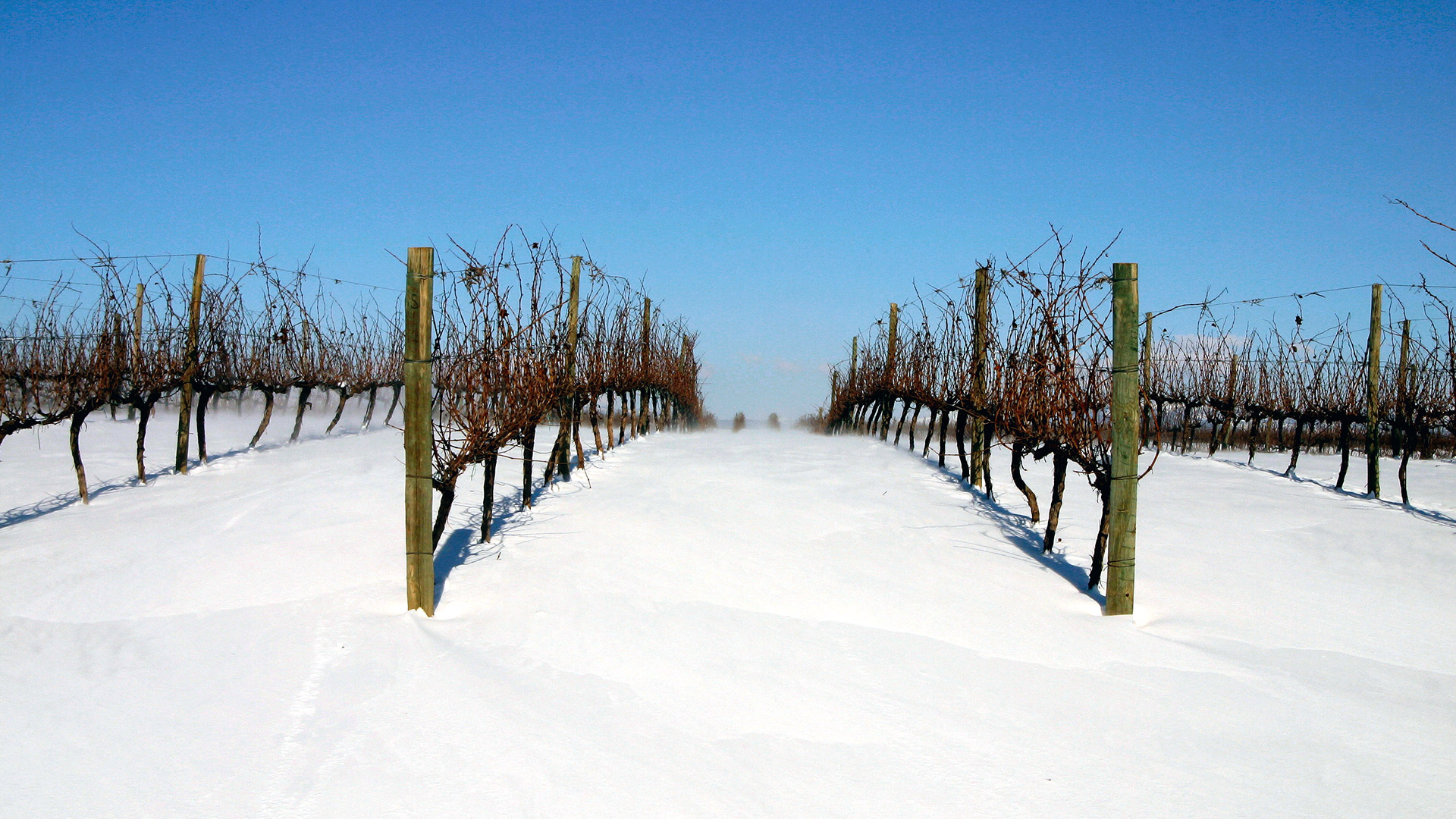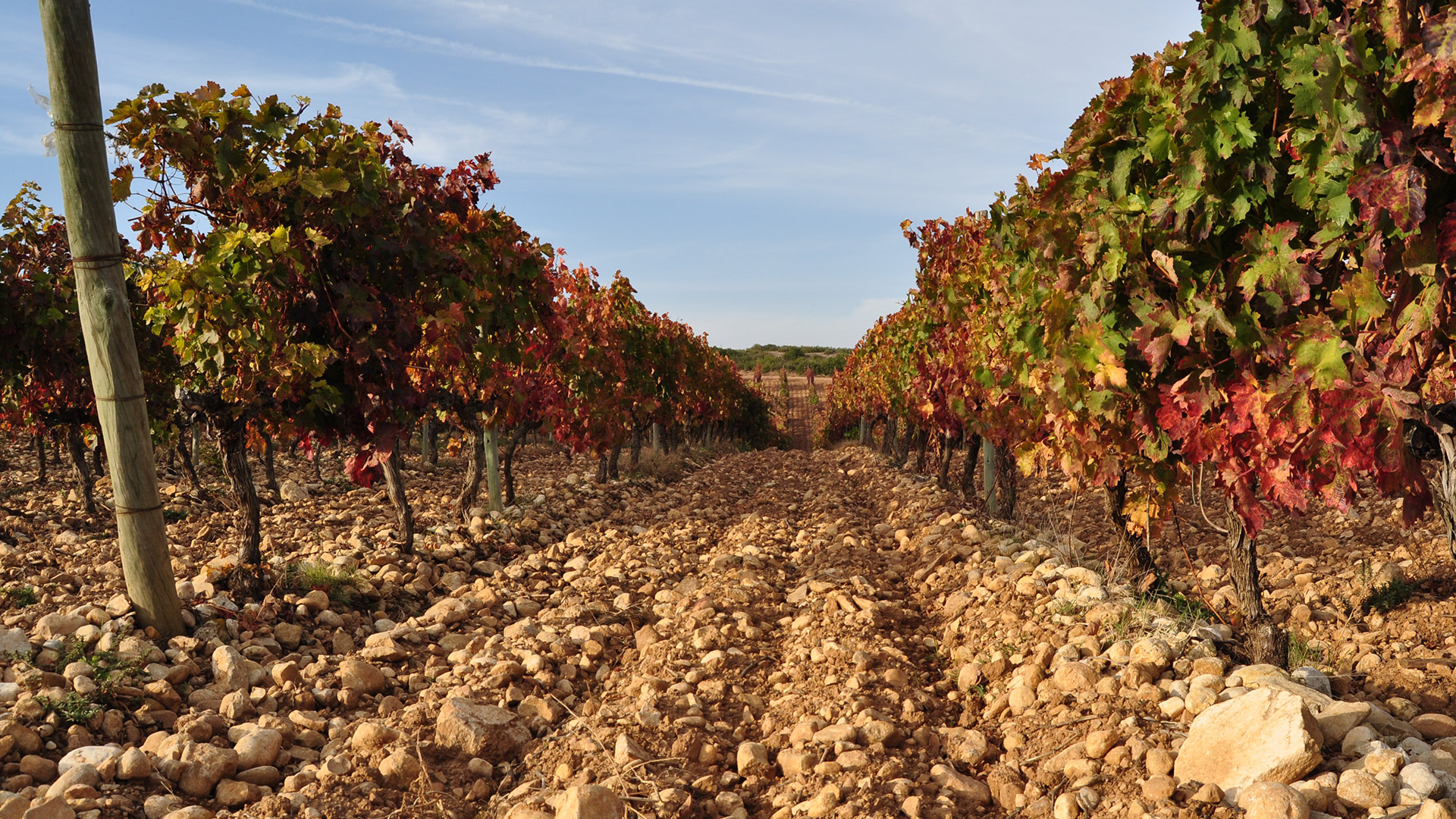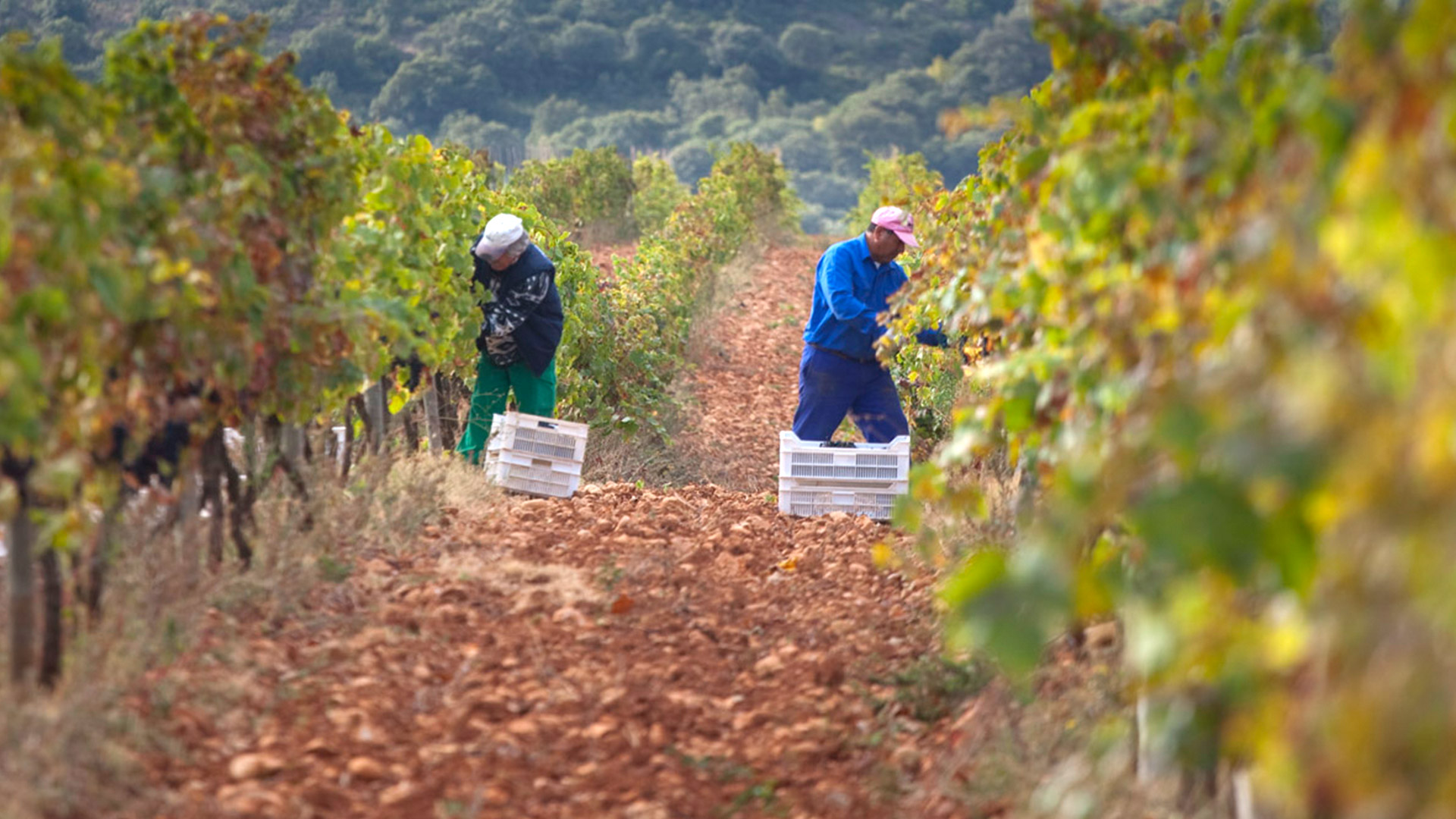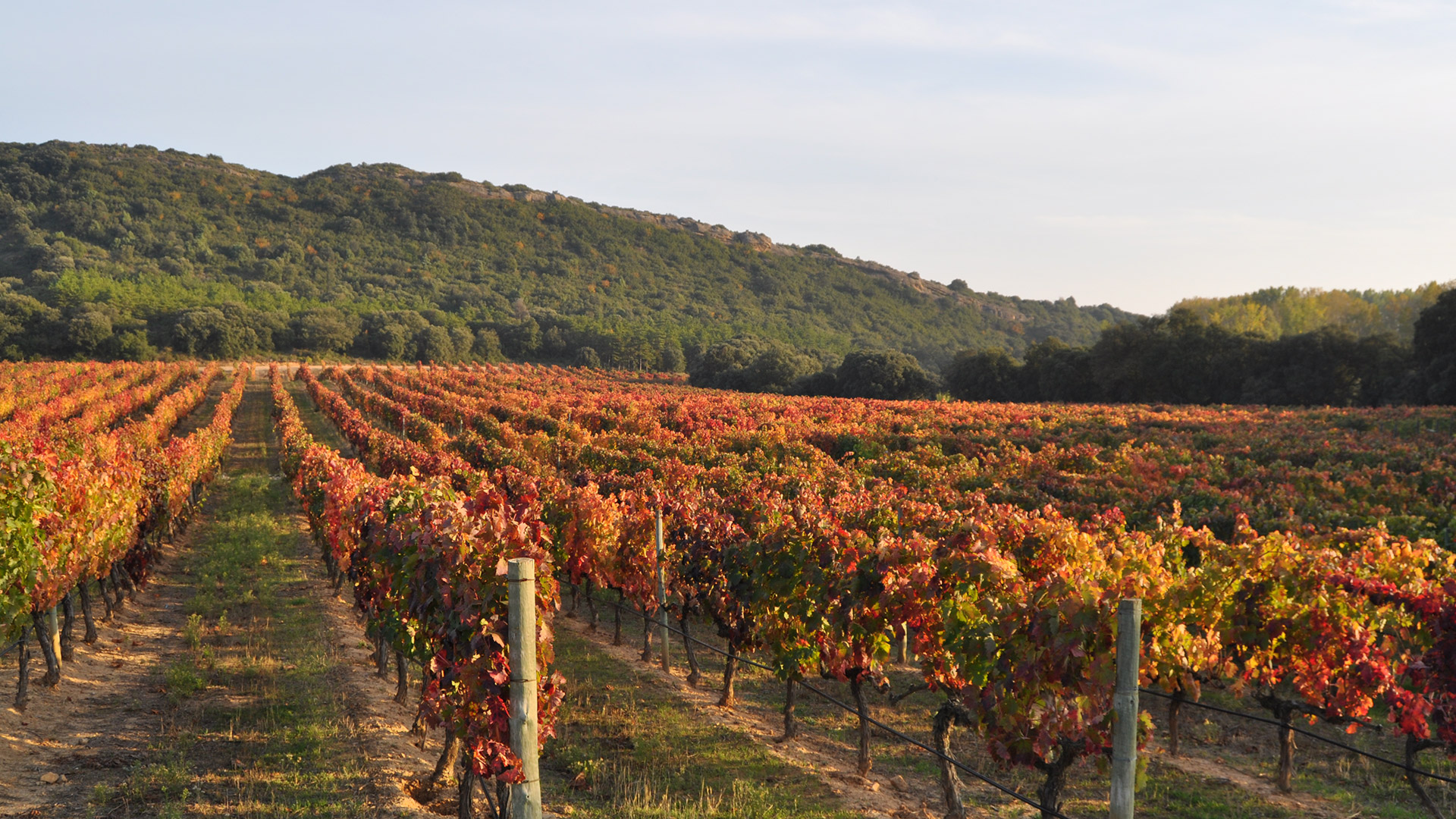Finca Legardeta
Legardeta is a wine estate located in Villatuerta, 40 km southwest of Pamplona. It covers over 245 hectares that include 103 hectares of vineyards that blend in perfectly with the local woodland and scrubland ecosystem.
The climate
Atlantic-Continental
Within the context of Spanish wine production, primarily characterised by the Mediterranean climate, Legardeta stands apart. The estate is located in an area with a marked Atlantic-Continental influence, where the average annual temperature is 12.8ºC. Here, there are only a few really hot days in the summer and a significant variation in day and night time temperatures at the end of the summer. This is the key to obtaining good colour in the red varietals and preserving better acidity in the wine.
The average rainfall is around 600 mm/year.
This exceptional location allows the grapes to ripen slowly and fully, which is important for obtaining quality wines with a fresh, elegant profile.

The soils
An undulating landscape
Finca Legardeta is located in an area of complex geology, a transition zone between the Pyrenees and the Ebro River Basin, lying at an average altitude of 450 m.
There are some common factors found in all of the plots, such as the presence of a calcareous-sandstone bedrock in prismatic layers and loamy soils with a variable clay and limestone content depending on the altitude. In general the soils are very suitable for the cultivation of the vine as they are poor soils with a good balance between retention of nutrients and supply of water for the vine and this helps us to produce big, smooth wines boasting fine and elegant aromas.
These characteristics and the undulating landscape (with 20% gradients) together make up a set of vineyards that share the same basic elements, but which have very different characters. This allows us to play around with many different land exposures and soils for each varietal.

Viticulture
The human influence on the terroir
The property is totally surrounded by countryside, so, when planting the vineyards, decisions were taken to minimise their environmental impact: respecting the mountainous areas, working the land vertically without turning it over which destroys the soil's different horizons, and planting the vineyards against the slope to reduce erosion. Ploughing has been replaced by natural plant covers that also improve the structure of the soil, boost microbial life and prevent excess mineralisation, helping to ensure that the natural cycle of nutrient replacement is effective and practically self-sufficient, in balance with the low production yields sought in order to obtain optimum quality grapes.
In terms of crop protection, we select the most effective that are classified as having less impact on the environment and auxiliary fauna.
Another unique feature of the Legardeta estate is the density of planting which, with 6,000 vines per hectare make it the most densely-planted vineyard in Spain. This plantation scheme enables us to maximise the exposed foliage surface area per hectare and to reduce the yield per vine, thereby enabling the grapes to accumulate plenty of colour and structure.

The varietals
Suitability for the location
The choice of varietal is the fourth factor that “closes the circle” of the terroir. Starting from the premise that the excellence of a wine does not come from the quality potential of a particular varietal but rather from its suitability for a particular terroir, research was carried out to find out which varietals would best suit the Legardeta climate. This was followed by a careful study of the estate's patchwork of plots and the influence of the various different exposures, slopes and soils, serving as an illustration of the edaphoclimatic variability which has been recorded in different parts of the estate of up to 6.2ºC in a single day.
Conclusions were soon reached, some backed by the reassurance of centuries-old tradition (Tempranillo and Garnacha) and others leading to the identification of those varietals that could, as has been proven, find a suitable terroir at Legardeta (Chardonnay and Syrah).

 Chivite
Chivite